Robins, Francis George (Flying Officer)
Killed in Flying Accident 1954-August-18


Birth Date: 1932-July-18
Born: Saskatoon, Saskatchewan
Parents: Son of George E. and Martha L. Robins of Unionville, Ontario. Brother of Patricia L. Robins of Orilla Ontario.
Spouse:
Home: Saskatoon, Saskatchewan
Enlistment: Toronto, Ontario
Enlistment Date: 1953-November-26
Service
RCAF
Unit
416 Sqn- Squadron
Ad Saltum Paratus Ready for the leap
Base
Rank
Flying Officer
Position
Pilot
Service Numbers
202689
Crew or Other Personnel
Sabre 23113
Sabre serial: 23113
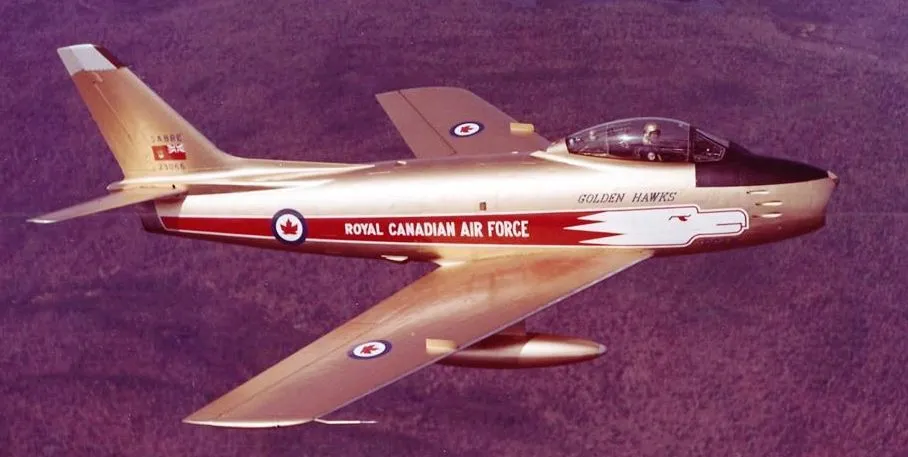
Canadair CL-13 Sabre Mk. 5 (Serial No. 23066), Golden Hawks
The North American F-86 Sabre, sometimes called the Sabrejet, is a transonic jet fighter aircraft. Produced by North American Aviation, the Sabre is best known as the United States' first swept-wing fighter that could counter the swept-wing Soviet MiG-15 in high-speed dogfights in the skies of the Korean War (1950"“1953), fighting some of the earliest jet-to-jet battles in history. Considered one of the best and most important fighter aircraft in that war, the F-86 is also rated highly in comparison with fighters of other eras. Although it was developed in the late 1940s and was outdated by the end of the 1950s, the Sabre proved versatile and adaptable and continued as a front-line fighter in numerous air forces.
Its success led to an extended production run of more than 7,800 aircraft between 1949 and 1956, in the United States, Japan, and Italy. In addition, 738 carrier-modified versions were purchased by the US Navy as FJ-2s and -3s. Variants were built in Canada and Australia. The Canadair Sabre added another 1,815 aircraft and the significantly redesigned CAC Sabre (sometimes known as the Avon Sabre or CAC CA-27), had a production run of 112. The Sabre is by far the most-produced Western jet fighter, with a total production of all variants at 9,860 units.
The fighter-bomber version (F-86H) could carry up to 2,000 lb (907 kg) of bombs, including an external fuel-type tank that could carry napalm. Unguided 2.75-inch (70-millimeter) rockets were used on some fighters on training missions, but 5-inch (127 mm) rockets were later carried on combat operations. The F-86 could also be fitted with a pair of external jettisonable jet fuel tanks (four on the F-86F beginning in 1953) that extended the range of the aircraft. Both the interceptor and fighter-bomber versions carried six 0.50 in (12.7 mm) M3 Browning machine guns with electrically-boosted feed in the nose (later versions of the F-86H carried four 20 mm (0.79 in) cannon instead of machine guns). Firing at a rate of 1,200 rounds per minute, the 0.50-inch guns were harmonized to converge at 1,000 ft (300 m) in front of the aircraft, using armor-piercing (AP) and armor-piercing incendiary (API) rounds, with one armor-piercing incendiary tracer (APIT) for every five AP or API rounds. The API rounds used during the Korean War contained magnesium, which were designed to ignite upon impact, but burned poorly above 35,000 ft (11,000 m) as oxygen levels were insufficient to sustain combustion at that height. Initial planes were fitted with the Mark 18 manual-ranging computing gun sight. The last 24 F-86A-5-Nas and F-86Es were equipped with the A-1CM gunsight-AN/APG-30 radar, which used radar to automatically compute a target's range, which later proved to be advantageous against MiG opponents over Korea. Wikipedia
![]() Wikipedia North American F-86 Sabre
Wikipedia North American F-86 Sabre
![]() YouTube F-86 Sabre Aerobatics - No Music! - Airshow London 2018
YouTube F-86 Sabre Aerobatics - No Music! - Airshow London 2018
F-86 (Canadair Sabre) Part Manual Volume I
F-86 (Canadair Sabre) Part Manual Volume II
F-86 (Canadair Sabre) Maintenance and Diagrams (Partial Document)
Unit Desciption
416 Sqn Ad Saltum Paratus ("City of Oshawa")
History of the Squadron during World War II (Aircraft: Spitfire Mks. IIA, IIB, VB, VC, IX, IXB, XIVE, XVI)
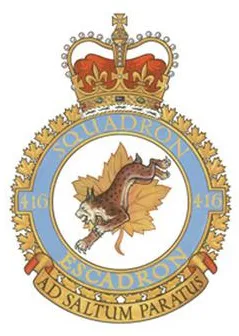
No. 416 Squadron was the 15th RCAF squadron formed overseas in WWII. It was the sixth fighter squadron, and was formed at Peterhead, Scotland ![]() on 22 November 1941. The unit flew Supermarine Spitfire aircraft of various marks as part of the defence of Great Britain, and also undertook offensive operations into Europe. The squadron formed part of the Second Tactical Air Force. After D-Day, the squadron moved to France on June 16, 1944 and thereafter moved with the land forces through France, the Low Countries and Germany, as a fighter and ground attack unit. After the termination of hostilities, the squadron remained in Germany as part of the British Air Forces of Occupation until it was disbanded at Utersen, Germany
on 22 November 1941. The unit flew Supermarine Spitfire aircraft of various marks as part of the defence of Great Britain, and also undertook offensive operations into Europe. The squadron formed part of the Second Tactical Air Force. After D-Day, the squadron moved to France on June 16, 1944 and thereafter moved with the land forces through France, the Low Countries and Germany, as a fighter and ground attack unit. After the termination of hostilities, the squadron remained in Germany as part of the British Air Forces of Occupation until it was disbanded at Utersen, Germany ![]() on 21 March 1946.
on 21 March 1946.
In the course of hostilities, the squadron claimed 75 enemy aircraft destroyed, 3 probables and37 damaged, for the loss of 42 aircraft and 35 pilots, of whom 19 were killed or missing, 13 were POW (1 escapee) and 1 evaded capture. In the ground attack role, the squadron destroyed 286 motor vehicles, 13 locomotives and other miscellaneous targets. Two of the pilots (Flight Lieutenant D.E. Noonan, DFC and Squadron Leader F.H. Boulton, DFC) were aces with at least 5 enemy aircraft shot down. Awards to squadron personnel were 1 Bar to DFC, 11 DFCs, 1 DFM, 1 DFC (USA) and 1 Flying Cross (Netherlands). Battle Honours were: Defence of Britain 1942-44, English Channel and North Sea 1943, Fortress Europe 1942-44, Dieppe, France and Germany 1944-45, Normandy 1944, Arnhem, Rhine.
Maps for Movements of 416 Squadron 1941-46
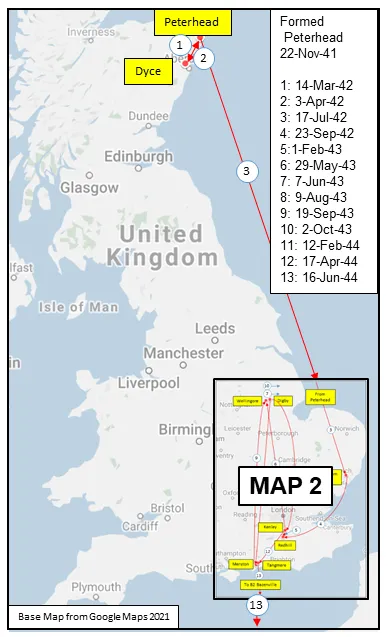
MAP 1: 416 Squadron Movements in Britain 1941-44 (right-click on image to display enlarged in new tab)
|
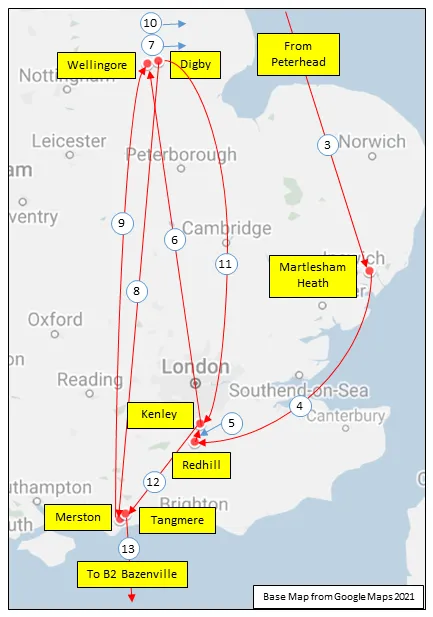
MAP 2: 416 Squadron Movements in Britain: Detail of Map 1
|
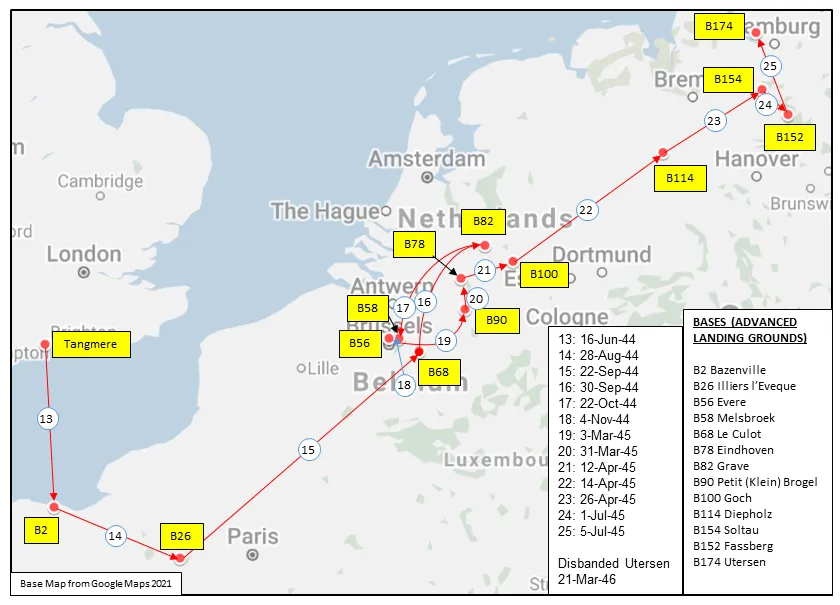
MAP 3: 416 Squadron Movements in Europe 1944-46
|
416 Squadron History Summary 1941-45
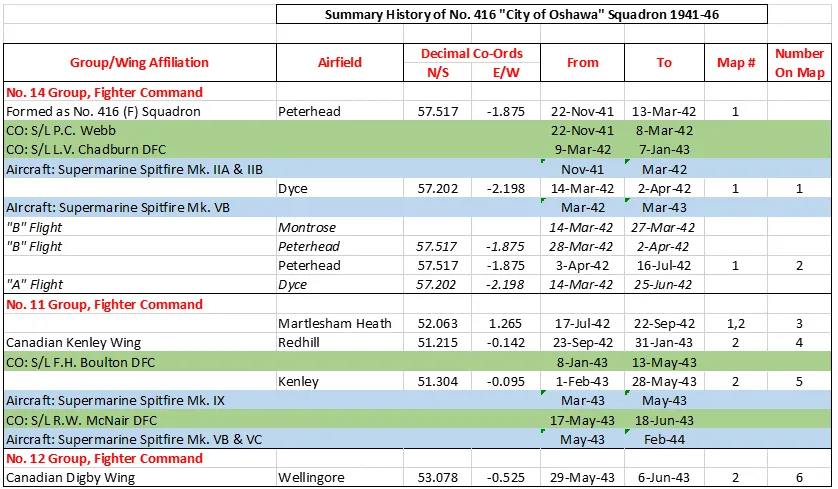
416 Squadron History Summary 1941-45 Page 2
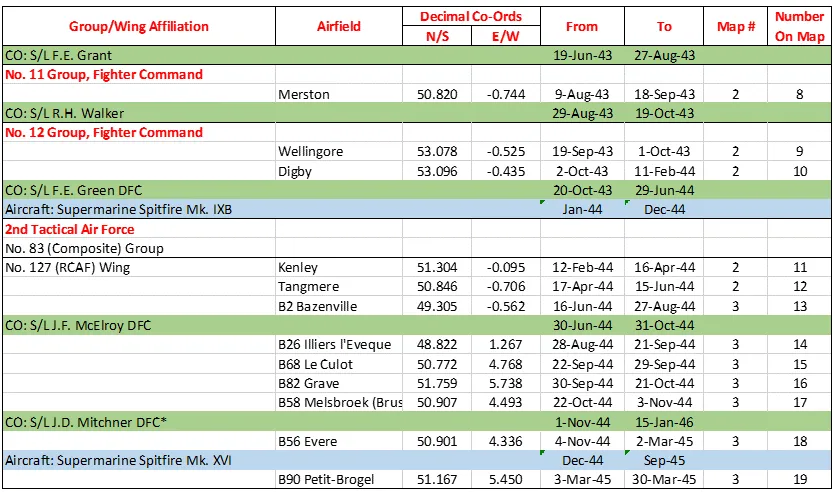
416 Squadron History Summary 1941-45 Page 3

History of the Squadron Post-WWII (Aircraft: Mustang, Sabre Mk 2, 5, 6, Canuck, Voodoo, Hornet)
The squadron was re-formed as a Fighter unit at Uplands, Ontario ![]() on 8 January 1951 with Mustang and, later, Canadair Sabre aircraft of different marks. The squadron joined No. 2 (Fighter) Wing at Grostenquin, France
on 8 January 1951 with Mustang and, later, Canadair Sabre aircraft of different marks. The squadron joined No. 2 (Fighter) Wing at Grostenquin, France ![]() in September 1952. In 1956, it was decided to replace one Sabre squadron in each of No. 1 Air Division Europe’s four wings with an all-weather fighter unit. When No. 423 AW(F) Squadron arrived from Canada, No. 416 was deactivated on 31 January 1957 and reactivated as All-Weather (Fighter) at St Hubert, Quebec
in September 1952. In 1956, it was decided to replace one Sabre squadron in each of No. 1 Air Division Europe’s four wings with an all-weather fighter unit. When No. 423 AW(F) Squadron arrived from Canada, No. 416 was deactivated on 31 January 1957 and reactivated as All-Weather (Fighter) at St Hubert, Quebec ![]() on 1 February, and flew Avro Canada CF-100 (Canuck) aircraft on North American air defence. Pending re-equipment with CF-101 (Voodoo) aircraft, the unit was again deactivated on 1 September 1961. Reactivated at Bagotville, Quebec
on 1 February, and flew Avro Canada CF-100 (Canuck) aircraft on North American air defence. Pending re-equipment with CF-101 (Voodoo) aircraft, the unit was again deactivated on 1 September 1961. Reactivated at Bagotville, Quebec ![]() on 1 January 1962, it subsequently moved to Chatham, New Brunswick
on 1 January 1962, it subsequently moved to Chatham, New Brunswick ![]() in November, where it flew the interceptor until the end of 1984. 416 Squadron thus became the world's last front-line unit flying Voodoos. In 1988 the squadron relocated to CFB Cold Lake as a Tactical Fighter Squadron flying McDonnell-Douglas CF-18s (Hornet), and later merged with 441 Tactical Fighter Squadron to re-form No. 409 Tactical Fighter Squadron in 2006.
in November, where it flew the interceptor until the end of 1984. 416 Squadron thus became the world's last front-line unit flying Voodoos. In 1988 the squadron relocated to CFB Cold Lake as a Tactical Fighter Squadron flying McDonnell-Douglas CF-18s (Hornet), and later merged with 441 Tactical Fighter Squadron to re-form No. 409 Tactical Fighter Squadron in 2006.